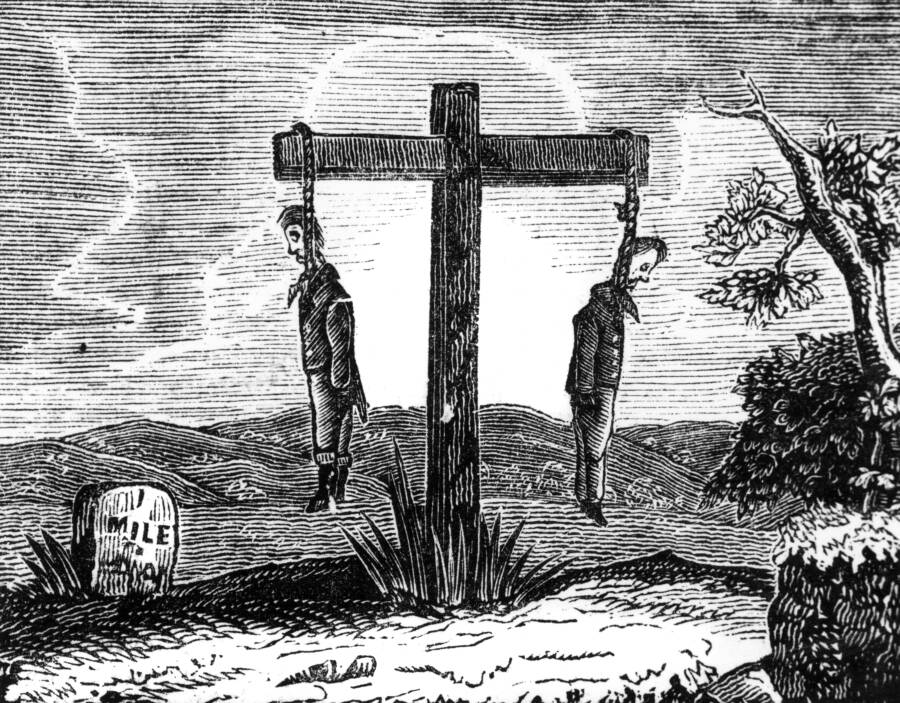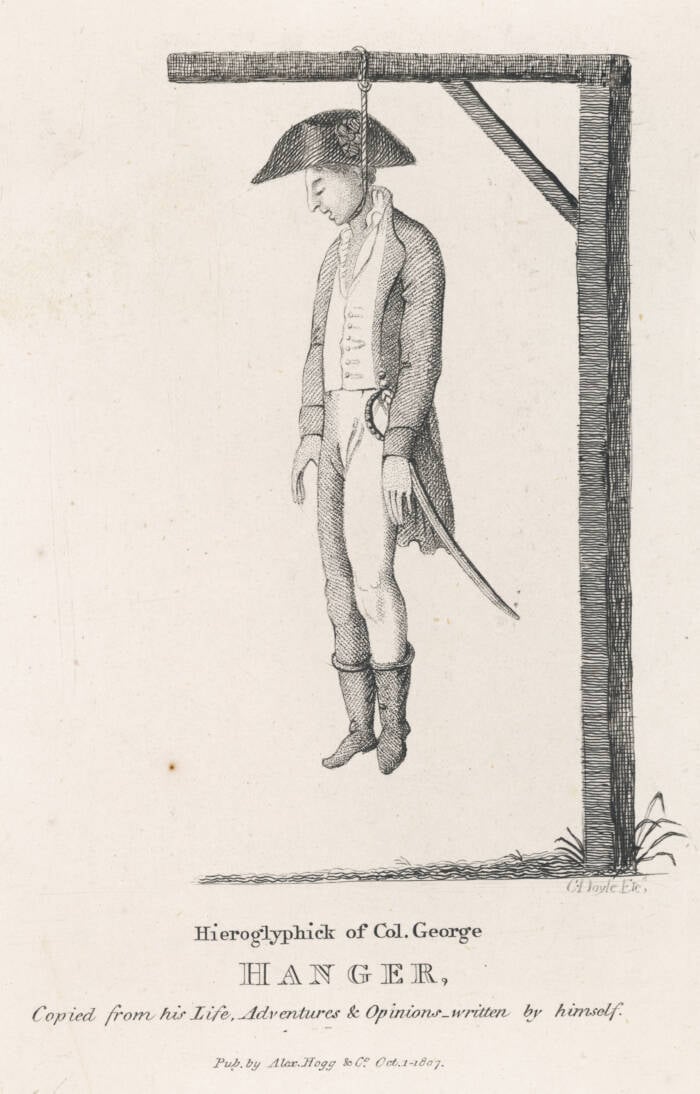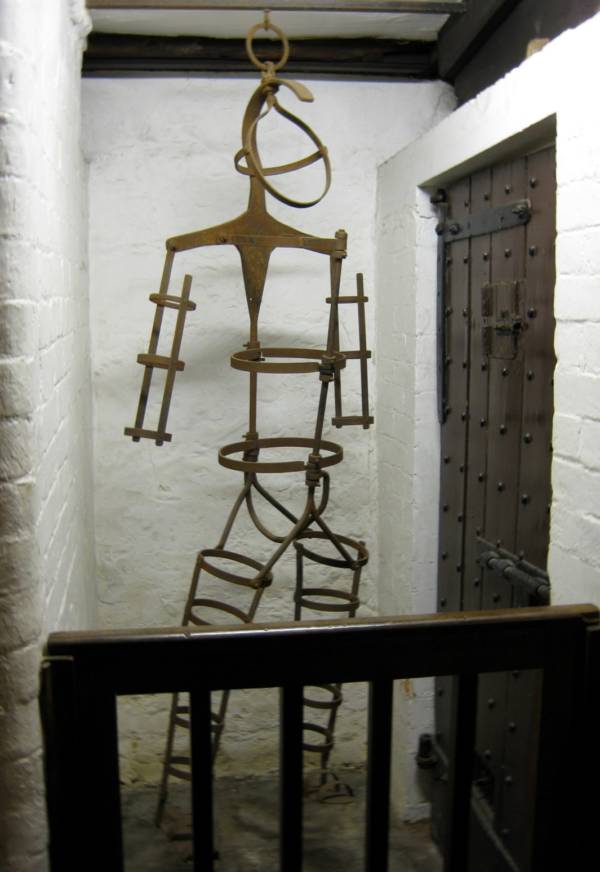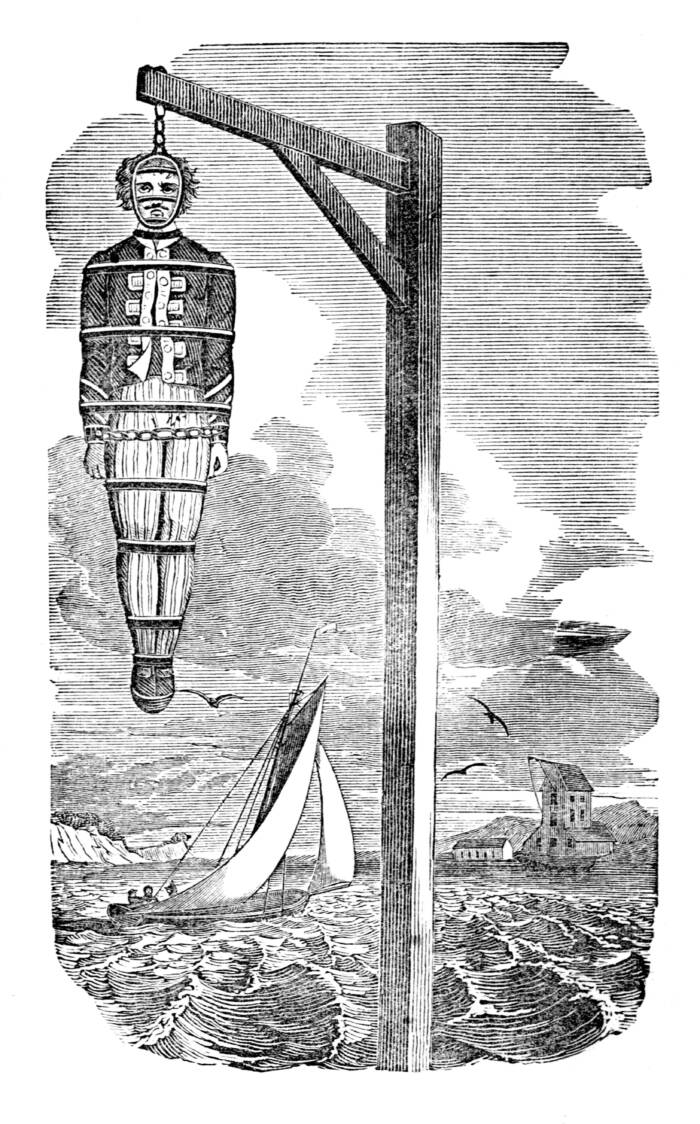Also known as "hanging in chains," gibbeting often involved locking criminals in human-shaped cages and hanging them up in public areas as a warning to others.

Chronicle / Alamy Stock PhotoThe gibbet was a form of public execution meant to deter criminals.
Throughout history, criminals have been subjected to punishments that now seem needlessly grisly and barbaric. And notable among these was the gibbet.
Popular in 18th-century England, gibbeting commonly involved locking criminals in human-shaped cages and hanging them up for display in public areas as a warning to others. The gibbet itself refers to the wooden structure from which the cage was hung.
In most cases, criminals were executed prior to being gibbeted. However, some unlucky victims were gibbeted alive and left to die.
This brutal, gallows-style public execution killed its victims over the course of several days by causing them to die of exposure, dehydration, or starvation. And although the gibbet was meant to deter other would-be criminals from committing the same crime as the sentenced, if the monarch at the time was unpopular, this could backfire greatly.
What Was The Gibbet?
The gibbet’s origins can be traced back to the Medieval period, according to Atlas Obscura, though it was commonly used in the 17th and 18th centuries. The device was a style of public execution, similar to the guillotine, the executioner’s block, an impalement stake, or hanging gallows. Placing a criminal’s body in a gibbet to be put on display was also known as “hanging in chains.”
Despite having been in use for decades, the practice of gibbeting was officially codified in England by the Murder Act of 1752. This act required those convicted of murder to be either gibbeted or dissected, though the punishment has also been used for traitors, robbers, highwaymen, and pirates.
In fact, a number of legendary figures were executed by gibbet, including the infamous pirate Captain Kidd, who was hung in chains in London in 1701 and left hanging there as a warning to other would-be pirates.
By leaving dead bodies hanging from the gibbet, law enforcement believed that other would-be criminals would be deterred from committing similar crimes.
The victims of gibbeting were almost always men. Since female corpses were in high demand from surgeons and anatomists, female criminals were dissected rather than gibbeted.

Andrew Dunn/Wikimedia CommonsReconstruction of a gibbet in Cambridgeshire, England.
The Spectacle Of Gibbeting
Oddly enough, the gibbeting of a criminal was considered to be a great spectacle. Excited crowds would gather to see it, sometimes amounting to tens of thousands of people.
There were, however, a few notable times in which gibbeting backfired on an unpopular monarch. Such an instance occurred in the early 14th century under the rule of King Edward II, as reported in English Wayfaring Life in the Middle Ages by Jean Jules Jusserand. When Edward II’s enemies — the rebels Henry of Montfort and Henry of Wylynton — were drawn and hanged, the king ordered their bodies be displayed via gibbet near Bristol.

Chronicle / Alamy Stock PhotoAn 1804 illustration of an early execution gibbet.
Given that Edward II was not well regarded by his people, however, the Henrys’ bodies were instead made into relics and venerated as symbols of rebellion against the king. Some rumors even circulated that miracles had occurred in proximity to the gibbet that displayed their bodies.
Eventually, this barbaric practice began to lose some popularity until England finally banned it in 1834. And in hindsight, it’s fairly easy to see why gibbeting fell out of favor.
Why Hanging In Chains Fell Out Of Favor
While many viewed gibbeting as a sort of macabre spectacle, living near a gibbet was an unpleasant experience.
Authorities intentionally made gibbeted bodies difficult to take down by hanging them from 30-foot-tall posts. On one occasion, they even studded a post with 12,000 nails to keep it from being removed.
Gibbets often wouldn’t be removed until years after the bodies had rotted and had been devoured by bugs and birds, becoming nothing more than skeletons.

Clearview / Alamy Stock PhotoWinter’s Gibbet in Northumberland.
The rotting corpses would often stink so badly that nearby residents would have to shut their windows to keep the wind from carrying the bodies’ stench into their homes.
Furthermore, gibbets made a chilling creaking, clanking sound as they twisted and swayed in the wind — a sound that was certainly eerie enough to spook those who lived nearby.
Executions by gibbet were also logistically difficult to stage. Blacksmiths who were tasked with making the cages often had a hard time doing so, since they often had no prior knowledge of the structures. Consequently, the cages’ designs varied greatly.
Many objected to the practice on the grounds that it was barbaric. Some Christians also objected to it, arguing that displaying criminals’ bodies posthumously was disrespectful.

NotFromUtrecht/Wikimedia CommonsA gibbet cage on display at Leicester Guildhall Museum.
Despite all of this, authorities insisted on using this grisly form of execution for decades.
At the time, they felt that the key to stopping crime was making its punishment as appalling as possible. They argued that punishments like gibbeting showed would-be criminals that breaking the law was far from worthwhile.

Science History Images / Alamy Stock PhotoAn 18th-century illustration depicting Captain Kidd hanging in chains for piracy.
However, despite the appalling nature of gibbeting, crime in England failed to decline while the practice was in use. This is perhaps part of the reason why it was formally abolished in 1834.
Still, remnants of the practice can be found throughout England. More than a dozen gibbet cages remain in the country, most of which are in small museums.
Furthermore, many criminals lent their names to the places where they were gibbeted. As a result, a number of England’s towns and regions have roads and features that bear the names of gibbeted criminals. These places serve as reminders of the disturbing punishment that the country once embraced.
After learning about the grisly practice of gibbeting, read the last words of 23 notorious criminals before they were executed. Then, learn about the brutal history of immurement, the execution method that entombed victims alive.





